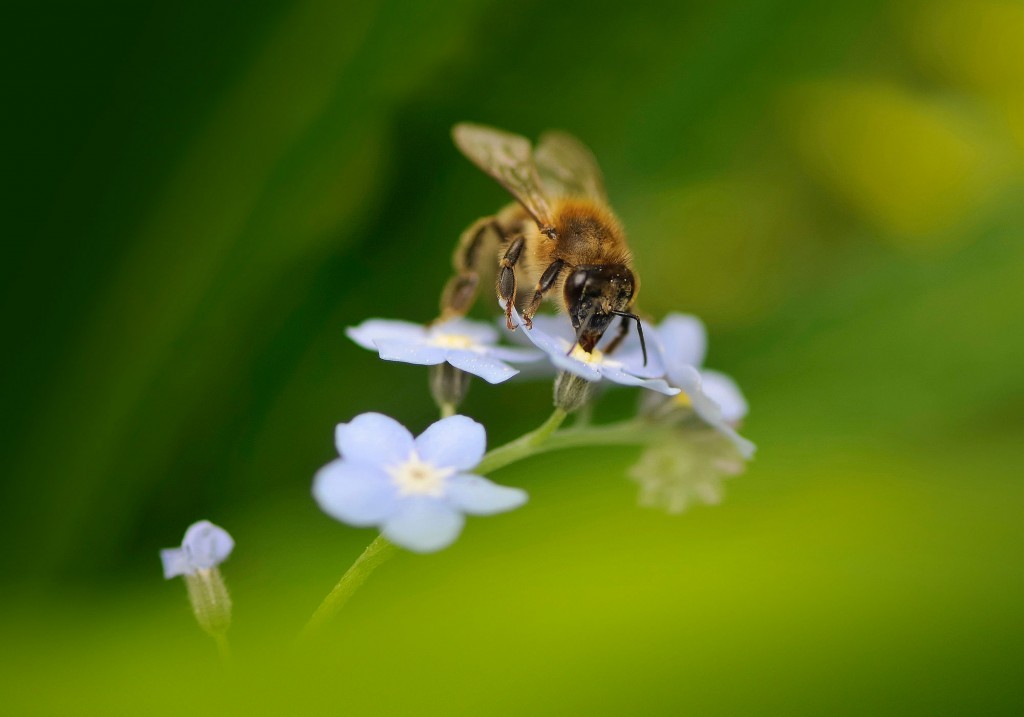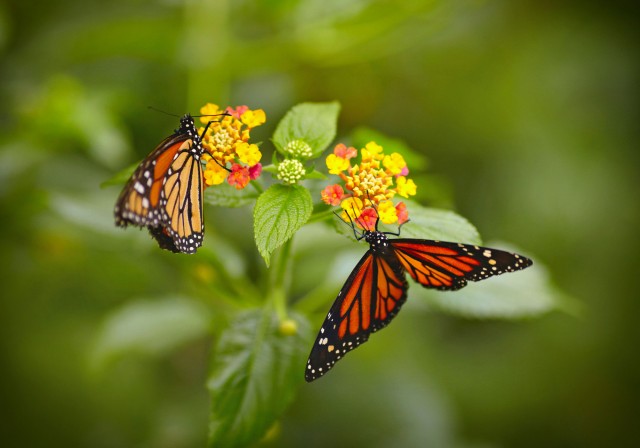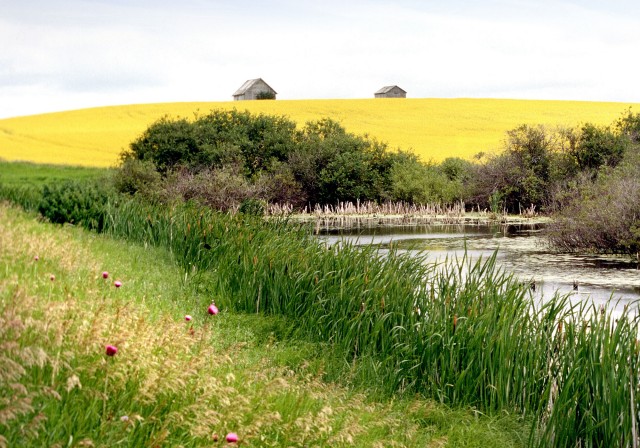Insects on call
In recent years, food sources for pollinators have been disappearing like French restaurants in a recession. Other factors, like climate change, have been implicated in the decline of pollinator populations. By studying how these and other beneficial insects use wetland habitats, researchers are trying to help bring them back to the table.

When the snow melts in the spring and the bugs come to life in the fields, Jim Devries, a research scientist with DUC and Paul Galpern, an assistant professor of landscape ecology at the University of Calgary, will drive about 50 kilometres south from Calgary on a trapping expedition.
The expedition will take them into remnant wetlands, windbreaks and crop margins, where ducks feast on insects, and farmers seldom go.
“Much of southern Alberta is dotted with wetlands where ducks forage for food and raise their ducklings,” says Galpern. “They’re relatively scarce habitats, and we’re trying to measure their value for other organisms as a way of demonstrating broader values of wetland conservation.”
Near the towns of Herronton and Blackie, in the midst of canola, clover and timothy fields, the researchers will position 130 traps that resemble big white bleach jugs with tops like the fins of a blue plastic rocket ship. Each of these Blue Vane traps will capture as many as 100 creatures in a week. Most of them will be bees, says Devries. But the captives may also include a variety of other insects, including beetles, flies, wasps, moths, spiders, ants and butterflies.
“Insects depend on the same habitats that ducks use for nesting and foraging,” says Devries. “They’re an integral part of the ecosystem.”
Though most of us may take bugs for granted, their number, diversity, and role in ecosystem function is astonishing. There are 4,000 species of wild bee in North America, for example; 25,000 species of beetle; 3,000 species of spiders, 12,000 types of moth. They all feed on different crops in different regions of the continent, in different seasons and at different times of the day, and all of them have a role to play in supporting ecosystems and keeping us alive.
The bugs that end up in Devries and Galpern’s Blue Vane traps not only provide critical links in the food chain of many animals, they also contribute to the survival of humans by pollinating and controlling pests on plants used for food, beverages, medicines, condiments, spices and even fabrics.
Honey bees are probably the best-known of the pollinators, but according to Cory Sheffield, a research scientist and curator of invertebrate zoology at the Royal Saskatchewan Museum, there are more than 800 other bee species in Canada, and thousands of other pollinating insects that may account for well over 50 per cent of pollination of plants in Canada.

© DUC
In addition to pollination, insects such as flower fly larvae, which are also important pollinators as adults, provide some protection for plants against pests. Most insects also provide lunch and dinner for birds, some of which can be fussy eaters. Tree swallows may prefer flies that live on alfalfa, for example, to ants that feed on barley.
Pollinators can be fussy, too. Most bees will visit flowers only within a limited area around their nest. The larvae of monarch butterflies live exclusively on milkweed. Most flower-visiting insects wander through the landscape like browsers in a zoological food court, gorging themselves at the smorgasbords of the plant world.
“Low-bush blueberries have 70 or more species of bee pollinators alone,” says Sheffield, “and that doesn’t include other insects.”
Pollinators contribute to more than one of every three bites of food we eat or beverages we drink. Services provided to agriculture and society by pollinators and beneficial insects have been estimated at $57 billion a year in the U.S.
Until recently, the gluttons and gourmet diners of the bug world used to have no trouble indulging their appetite almost anywhere in Canada. Monarch butterflies could choose from an abundance of milkweed patches, while pollinators that drool over apple blossoms could flit through orchards in Nova Scotia, Ontario or B.C. But evidence indicates that pollinator populations are rapidly declining throughout North America.
The decline has been attributed to pesticides, disease and climate change. But one of the most critical factors has been the eradication of wetlands and crop margins that pollinators need to survive. “Taking out a couple of low spots in a field doesn’t seem like much, until you aggregate what’s happening all across Western Canada,” says Gregory Sekulic, a Canola Council agronomist.
By devoting fields to a single crop, growers inadvertently eliminate food sources and nesting grounds for a variety of animals that are beneficial to healthy ecosystems. Losing these creatures can threaten many of the plants that humans use to sustain themselves. Three-quarters of these plants depend for their reproduction on moths, bats, beetles and other creatures.

© DUC
DUC has already compiled a wealth of research on the critical importance of wetlands and remnant uncultivated land to the health of ducks and other animal populations. “But there’s not a lot of research into what a given patch of grassland provides for different invertebrates, pollinators and other beneficial insects,” says Devries. “How much habitat do you need to support an essential community of invertebrates? Do you need one acre per 100? Five acres per 100? Ten? No one knows. We just don’t have a good understanding of this.”
To address these questions, DUC has joined agriculture, industry and trade associations representing crop growers, pesticide developers and fertilizer producers in the Canadian Roundtable for Sustainable Crops. The group will contribute information to studies throughout North America that will compile a more accurate and detailed analysis of beneficial insect behaviour. They’re examining the issues from an ecological perspective as well as looking at the net profitability of having certain habitats in cropland.
“One thing we want to do is find out exactly what habitat and type of plant species are required to be hospitable to beneficial insects in crops,” says Sekulic.
By examining the habits of the bugs they catch this spring, researchers like Paul Galpern and Jim Devries will help to bring them back to the table.
“Building on our existing research,” says Devries, “we hope to improve our understanding of the ways in which wetlands support beneficial insects in Prairie Canada.”
Story by Bruce McDougall



